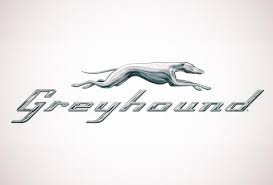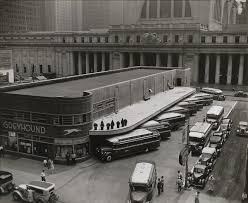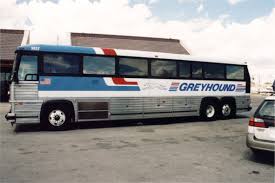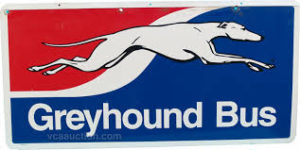Carl Erick Wickman began a bus service with Andy Anderson and C.A.A. Heed in 1914 by transporting iron ore miners at 15 cents a ride.
The next year Wickam joined up with Ralph Bogan to start the Mesaba Transportation Company.
In 1926 Wickman’s bus operations became known as Greyhound Lines and by 1927 the company had buses making transcontinental trips from California to New York.
In 1956 the US government began the Interstate Highway System and ownership of cars increased, causing a decline in the use of public transportation, including buses. Greyhound faced a long decline in ridership.
In 1984 Greyhound had a major driver’s strike. In the aftermath, Greyhound Lines was spun-off from the parent company.
In 1990 there was another major strike, this one ending in the company declaring bankruptcy.
In 1999 Ontario-based conglomerate Laidlaw Inc. purchased Greyhound Lines.
In 2007 Greyhound Lines was acquired by FirstGroup for $3.6 billion. As a result of the acquisition, Greyhound has gone through a major rebranding and spent $60 million updating its fleet.
In 2010, the company rolled out premium bus routes called “Greyhound Express”, which are designed to make fewer stops along popular urban routes.
A Greyhound Bus driver, who had a suspended license, caused a fatal crash near Fresno, California, in early 2019. In April 2019, at least 4 people have filed lawsuits against the company after the intoxicated bus driver caused the bus to overturn near Jackson, Mississippi, causing numerous injuries.
In 2015, Greyhound opened new offices in Monterrey and Nuevo Leon, Mexico. These cities were linked with each other, as well as several cities in Texas. In doing so, Greyhound made themselves the first American bus line to offer an intra-Mexican bus route.
Greyhound LinesCarl Erick Wickman began a bus service with Andy Anderson and C.A.A. Heed in 1914 by transporting iron ore miners at 15 cents a ride.
The next year Wickam joined up with Ralph Bogan to start the Mesaba Transportation Company.
History
In 1926 Wickman’s bus operations became known as Greyhound Lines and by 1927 the company had buses making transcontinental trips from California to New York.
In 1956 the US government began the Interstate Highway System and ownership of cars increased, causing a decline in the use of public transportation, including buses. Greyhound faced a long decline in ridership.
In 1984 Greyhound had a major driver’s strike. In the aftermath, Greyhound Lines was spun-off from the parent company.
In 1990 there was another major strike, this one ending in the company declaring bankruptcy.
In 1999 Ontario-based conglomerate Laidlaw Inc. purchased Greyhound Lines.
In 2007 Greyhound Lines was acquired by FirstGroup for $3.6 billion. As a result of the acquisition, Greyhound has gone through a major rebranding and spent $60 million updating its fleet.
In 2010, the company rolled out premium bus routes called “Greyhound Express”, which are designed to make fewer stops along popular urban routes.
A Greyhound Bus driver, who had a suspended license, caused a fatal crash near Fresno, California, in early 2019. In April 2019, at least 4 people have filed lawsuits against the company after the intoxicated bus driver caused the bus to overturn near Jackson, Mississippi, causing numerous injuries.
In 2015, Greyhound opened new offices in Monterrey and Nuevo Leon, Mexico. These cities were linked with each other, as well as several cities in Texas. In doing so, Greyhound made themselves the first American bus line to offer an intra-Mexican bus route.



